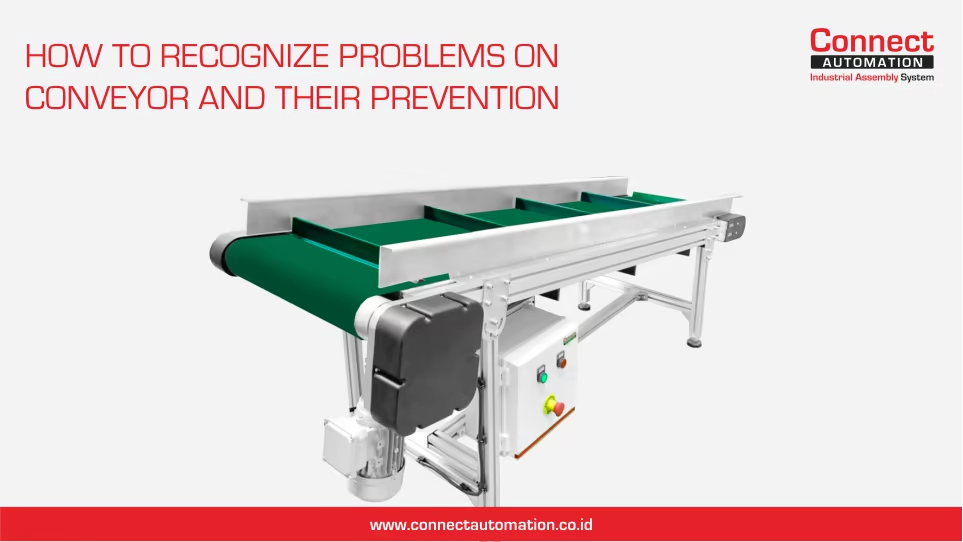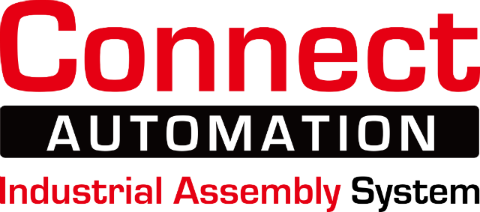REQUEST A FREE ESTIMATE!
How to Recognize Problems on Conveyors and Their Prevention

Conveyors are a tool that plays an important role in expediting the production process in the industry. If there is a problem or damage to the conveyor, of course it will hinder the production process. So, how do you prevent problems with the conveyor? What causes these problems to occur? Actually, all tools or machines must be maintained to find out whether the machine or tool is damaged, or if the machine or tool requires replacement parts, and so on. The following article will discuss problems that often arise on conveyors
Conveyor Frequently Enough Problems
Inspections and checks on the conveyor can be carried out first before entering the repair stage. This is the first step in monitoring the conveyor, which aims to see the condition of the parts of the conveyor. If a component is found or there is a malfunction or is damaged and needs to be replaced, immediately make a note of it and immediately take preventive steps. This is all necessary to prevent a lot of other damage resulting from small problems. This is very important considering that the greater the damage to the conveyor, the greater the money and time for repairs. Here are some things to watch out for when this happens to your conveyor.
Belts that don't run straight when carrying goods or loads on them
This usually happens because the load is not in the right position or is irregular, this position causes the belt to not run straight and deviate.
Slip Roller
Many factors cause this to happen, roller slip is a condition when the belt does not move according to the rotation of the driving roller. There are two reasons: the belt is too loose and also the friction between the belt and the frame. Too loose belt results in a loss of friction between the belt and the drive roller. This results in the belt not moving when the roller rotates. Prevent by checking and re-tensioning so that the belt remains in the right level of tension. Friction between the belt and the frame can occur if the goods placed on the belt are too heavy and do not match the maximum weight capacity of the conveyor. This results in if the weight of the item exceeds the weight that can be pulled by the motor, the roller will experience slippage and if this is done continuously it will cause the motor to overheat. Many factors cause this to happen, roller slip is a condition when the belt does not move according to the rotation of the driving roller. There are two reasons: the belt is too loose and also the friction between the belt and the frame. Too loose belt results in a loss of friction between the belt and the drive roller. This results in the belt not moving when the roller rotates. Prevent by checking and re-tensioning so that the belt remains at the right level of tension. Friction between the belt and the frame can occur if the goods placed on the belt are too heavy and do not match the maximum weight capacity of the conveyor. This results in if the weight of the item exceeds the weight that can be pulled by the motor, the roller will experience slippage and if this is done continuously it will cause the motor to overheat.
Conveyor Squeaks or Squeaks
Next, it is indicated by a squeaking sound on one part of the conveyor. There are several things that can cause this to happen, among them the first is that the shaft position is not parallel, the second is that the bearings are worn or possibly damaged, and the last is that the motor is too hot. Misalignment of the shaft position can occur due to incorrect installation of the roller shaft during installation. Shafts that are not parallel or tilted can cause friction between the surface of the shaft and the surface of the conveyor, causing a squeaking sound. Prevention can be done by checking the position of the shaft periodically to minimize the occurrence of squeaking sounds Bearing wear or damage can occur when the bearing is old or because there is misalignment in the shaft that is attached to the bearing. Damage to bearings is usually found in ball bearings that have cracked or broken. The sound heard is from the fragments of the ball. Overheating a motor can cause noise from the motor. This situation can occur if the motor temperature exceeds 800c. Conveyor motors usually have a weight limit for goods that can be moved via the belt. If the load weight exceeds the maximum limit, the motor will work harder and cause the motor temperature to increase.
Torn Conveyor Belt
The important point to avoid a torn conveyor is to choose a belt material that suits your needs. The factor of a torn conveyor belt is influenced by several factors, such as slanted belt connections and the cleanliness of the belt area which needs to be paid attention to. Slanted belt connections can cause little by little damage to the belt, and eventually the belt will tear. Connections that are not neat can also cause the belt to be damaged and torn so that it cannot be used. Cleanliness of the belt area is also one of the factors causing damage and tearing of the belt. This cleanliness is not just from dust or dirt in general, but clean from objects that should not be in the belt area.
Premium product from Connect Automation
Connect Automation provides the best quality conveyors in Indonesia. Our standard conveyor designs can be configured with various specifications so that your needs will be met, and if your needs have not been met or you are still unsure about our standard design, then you can also discuss further with our sales team to provide the product you need and of course with the best quality that you can get in Indonesia
Connect Automation specializes in providing automation solutions, including conveyor systems, to improve efficiency across various industries. The company delivers cutting-edge technology to help organizations automate tasks and optimize workflows. Connect Automation helps businesses reduce manual efforts, boost productivity, and achieve better outcomes. With a customer-focused approach, the company designs tailored solutions to ensure smooth and effective automation transitions for long-term success.
Kawasan Industri Jababeka Tahap 1, Jl. Jababeka II D Blok C14L Cikarang, Indonesia (17530)
(021) 893 5060 Google Maps
Rungkut Industri III, No. 37, Rungkut Menanggal, Kec. Gn. Anyar Surabaya, Indonesia (60293)
(031) 9985 8624 Google Maps
